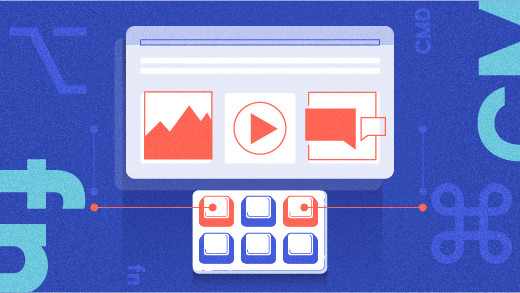Video has long been an integral part of education—back in the day, movies shown on huge reel-to-reel projectors were wheeled into classrooms to supplement teaching. Today, even the youngest students demonstrate their knowledge with multimedia video presentations recorded and edited on smartphones or Chromebooks, the "flipped classroom" (where students watch video lectures for homework and do assignments in class) is taking hold in K-12 schools, and professors make live video recordings of their classes available online for motivated students who want to review a lecture they attended (or for lazy learners who can't quite make it to their morning biology class).
Video software-as-a-service provider Kaltura offers a platform that helps businesses, cloud TV providers, and—increasingly—educators make video available to their audiences. The company started in 2006 as a business-to-consumer (B2C) platform for open video collaboration. Of the company's beginnings, Zohar Babin, Kaltura's vice president of platform and growth, says, "we built a platform where people from all around the world could collaborate to create online video shows. The platform would enable anyone to integrate video into their show and have the ability to edit and publish episodes all via the browser."
Opportunities in education
Around 2008, Kaltura recognized video's growing importance in education and seized the opportunity to branch out from its early focus on businesses. "Video was becoming a disruptive force, and so on top of the platform, we built use-case centric applications to help bring the power of video into specific workflows," says Zohar. "Because we made an architectural decision to build everything API first, it was seamless."
One of these iterations involved incorporating video into teaching and learning. Zohar says. "We built native integrations into known learning management systems (LMS), such as Blackboard and Canvas, that made video recording, authoring, playback, sharing, and collaboration native functionalities of the LMS." This functionality makes it easy for instructors to record their lectures and publish them immediately within the LMS, offering greater control over distributing them on public platforms such as YouTube.
Kaltura's fifth annual State of Video in Education report, released in July 2018, reveals that this was a smart move. A majority—68%—of educational institutions are now using lecture capture, a 21% increase in just the last two years. Other common uses of educational video include showing videos in the classroom (82%), supplementary material (74%), and student assignments (68%).
Kaltura has experienced strong community growth in its education sector. Zohar reports, "education organizations were very collaborative and open to sharing their experiences and best practices and, through user groups and industry events, we've had strong growth through word of mouth."
Openness fuels growth
This growth can be attributed to timing, architecture, and people. The company started just before Google acquired YouTube, Apple dropped support for Flash, and broadband became ubiquitous. This synergy, along with Kaltura's focus on open architecture (which includes open source, open APIs, open standards, and an open marketplace) facilitated rapid growth. The infrastructure provided robust, flexible, secure, and scalable solutions in varied markets and use cases.
These innovations were driven by the people at Kaltura—both the customers and developers—who built new workflows and applications, including its community of open source developers. Zohar says, "it is the partners who helped make Kaltura interoperable. [They] were not just strong advocates, but real contributors to our tech stack [and] distribution and helped build an open ecosystem that can solve any business need with video."
One of Kaltura's benefits is that any media can be converted to Kaltura. "You can use Kaltura to convert any video into a web-playable or other format and codec, or to build your own custom transcoding and publishing workflows," says Zohar.
Getting started
Kaltura has a strong developer community, with 160,000 registered on the Kaltura community forum. Many Kaltura developers meet at open source events like FOSDEM (where Kaltura has sponsored the Open Media Room since 2014). Contributions are made exclusively through its GitHub repository. If you'd like to contribute to Kaltura's development, navigate to its video platform as service (VPaaS) portal and register for a free developer account.
Kaltura is dually licensed under an open source and a commercial license, and content is owned by customers under their own licensing terms.
If you're interested in installing Kaltura's AGPLv3-licensed Community Edition on your server, point your browser to Kaltura.org and follow the installation guidelines. Kaltura runs on Red Hat Enterprise Linux, CentOS, Debian, and Ubuntu, and Docker templates are also available.
Resources and services specifically for the education, business, and media and entertainment sectors are available.







Comments are closed.